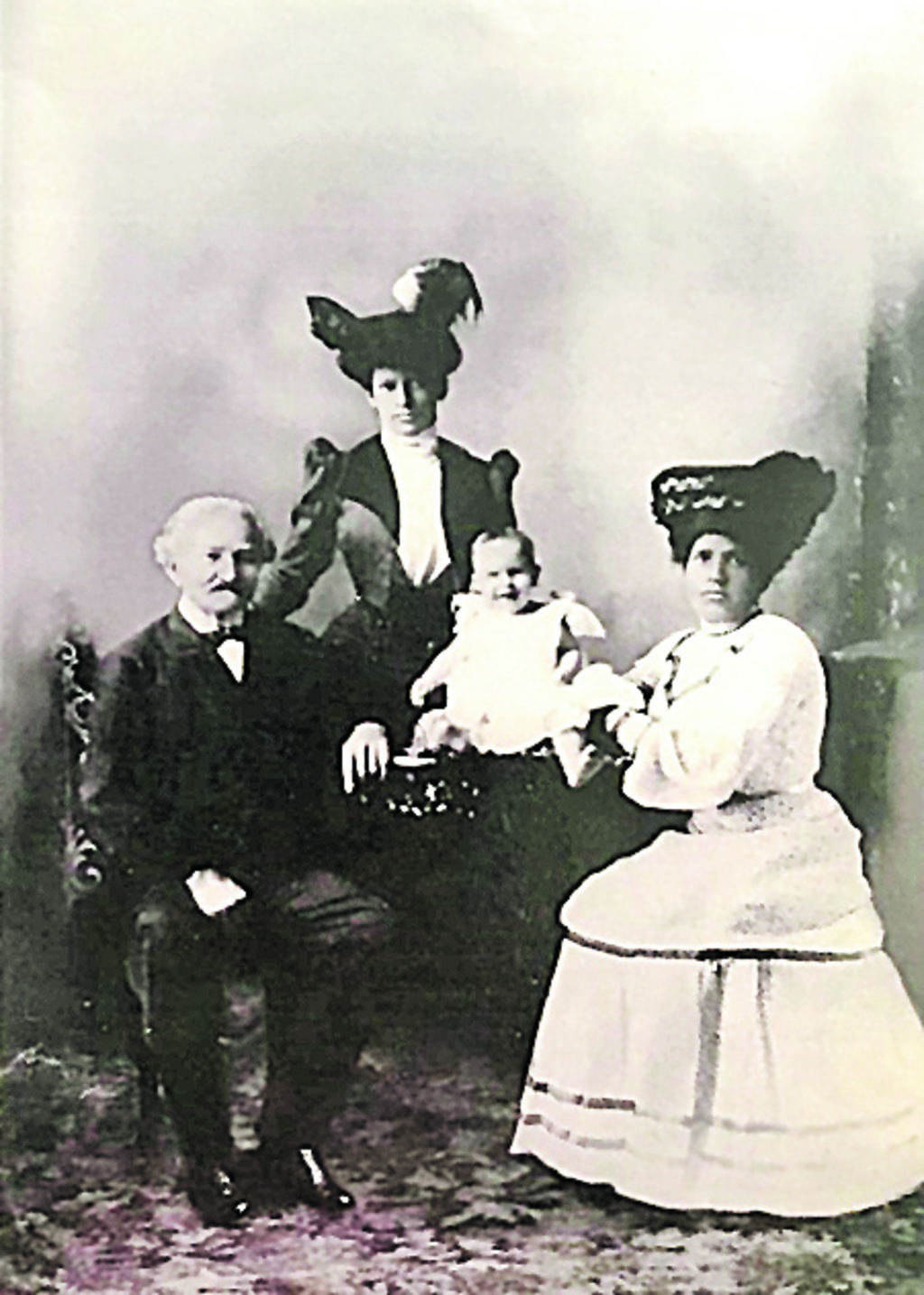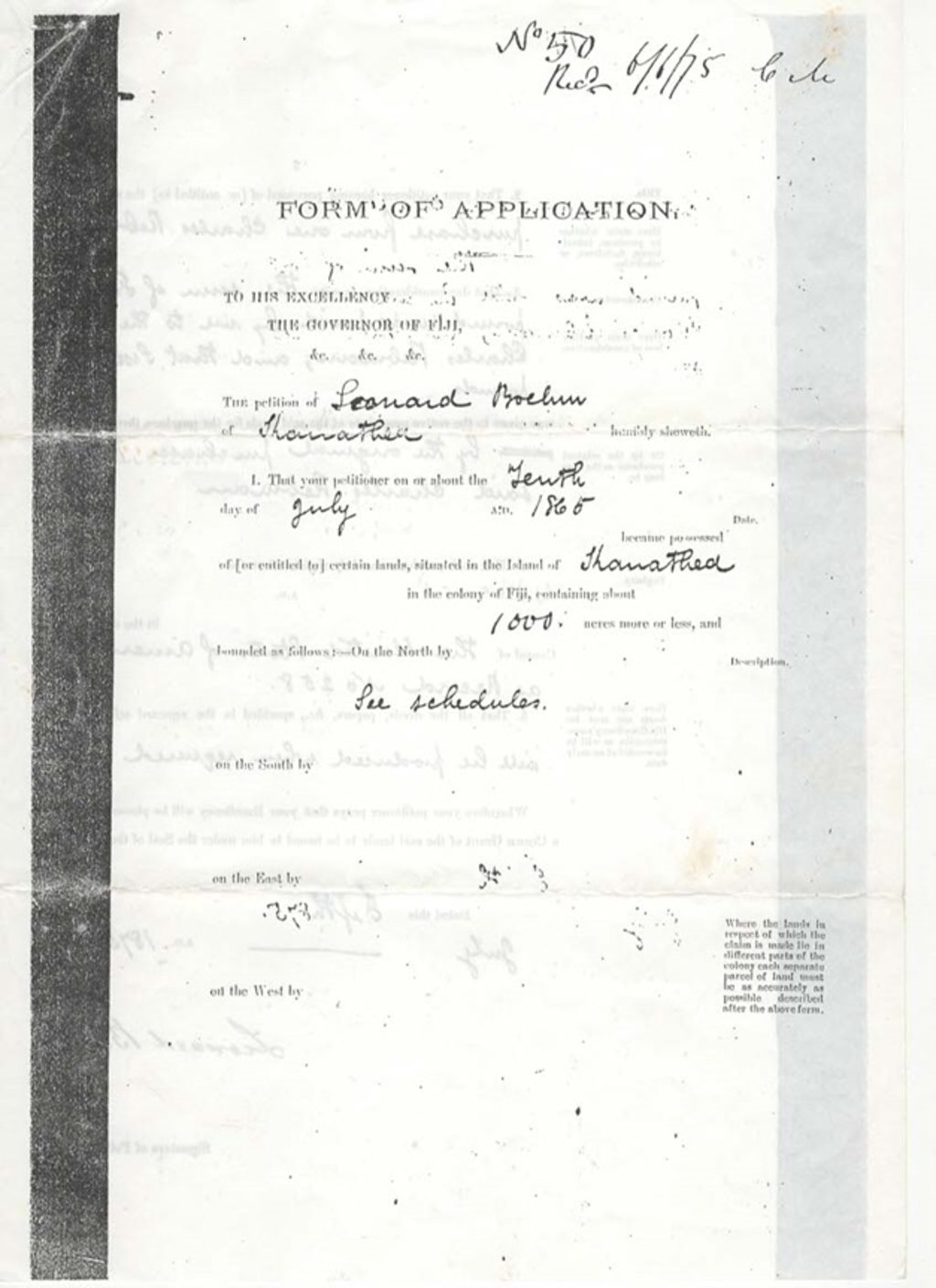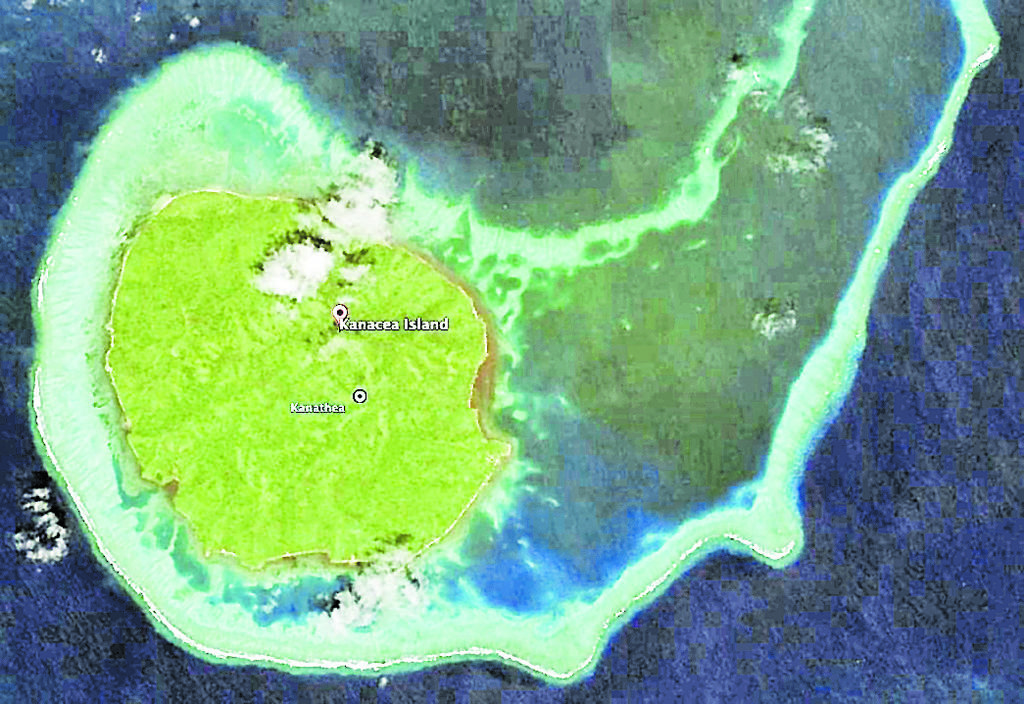DURING the Fijian days of old, under the leadership of Cakobau, Tui Cakau and Ma’afu, Europeans sailed the vast Pacific, eager to claim their piece of paradise.
Some sought refuge from their past crimes, while others pursued fortune.
One such opportunist was Leonard Boehm, a visionary who would have created a global village. His story has been narrated by his descendants, who conducted extensive research into his life.
Boehm is thought to have hailed from Weissenhorn, Bayern in Germany (according to his tombstone) and allegedly left his homeland in search of a better life. While little is documented about his voyage and encounters, one thing is certain: he spent his days in Fiji.
Boehm arrived in Fiji on March 21, 1859, at the age of 32. Family lore recounts that he was shipwrecked near Makogai and swam 18 miles to safety.
“It is thought that he first arrived in Ovalau when he came to Fiji,” says Clelia Park, a descendant and researcher of his lineage.
“He also lived for a time on Makogai and later bought half the island of Kanacea.”
Boehm’s specific movements remain unclear, but preserved documents reveal that on July 10, 1865, he purchased Kanacea Island for just 40 pounds. He acquired half the island from a man named Rebman, who had allegedly bought it from Tui Cakau.
“Charles Rebman and then Boehm bought the island of Kanacea from Tui Cakau after he relocated its people to Taveuni,” Mrs Park explained.
“It is thought that the Kanaceans had become too friendly with Ma’afu, who posed a threat to the Fijian status quo.”
Between 1861 and 1865, Fiji experienced a cotton boom due to the American Civil War. Cotton’s strategic value prompted increased production, despite the challenges of war. This drew many Europeans, including Boehm, to scavenge for land.
The cotton industry thrived in Fiji (both during and in the aftermath of the Civil War) particularly as American plantations were neglected, but devastating hurricanes and the Siege of Paris gradually led to its collapse.
In the absence of a functioning government, many planters, Boehm included, acquired land through questionable means, often trading weapons or alcohol with Fijians who may not have been the true owners.
He was later dubbed ‘the cotton king of Kanacea’, exporting his cotton to Europe. His ambition drove him to expand operations amid the disorderly aftermath of the American Civil War.
Having just purchased Kanacea, he saw the opportunity to capitalise on the cotton demand due to the American Civil War’s disruption.
Since the Kanaceans were relocated to Taveuni, Boehm faced challenges in finding local labour for his cotton farm, leading to him to bring labourers from other island countries and employ them on his farm.
By 1873 The Argus newspaper reported on what was to become known as blackbirding issues in the region.
The Argus article of 1873 is a report on two Royal Commissions.
The first one was held in Sydney and the second one was held in Suva in 1871.
They explored the legality of the Pacific Labour Trade which became known as ‘blackbirding’ because of its often poor reputation.
There are several other reports on the poor treatment of Pacific Islanders by many who engaged in the Pacific Labour Trade.
However, there was no evidence that suggested Boehm mistreated labourers he recruited.
In that article, Boehm testified about his experiences recruiting labourers for his plantations, mentioning he returned men who completed their service and used them as interpreters.
He found it relatively easy to recruit labourers, as islanders preferred the pay in Queensland but liked the food and climate in Fiji. On one trip aboard the Mary Ann, he sought workers who could thrive in Fiji’s fertile lands.
Boehm engaged men who had returned from previous labour experiences, believing they would serve as reliable interpreters. During his travels, he listened to many labourers’ stories. Some praised Fiji’s food and climate, while others voiced frustrations about long hours and low pay, often being kept beyond their agreed terms.
One evening, reflecting on a conversation with a Tanna islander who had received only an old musket after three years of labour, Boehm recognised these grievances as widespread. Determined to maintain a good reputation, he resolved to treat his labourers with respect, believing that fair pay and conditions would foster goodwill among island communities.
Having witnessed the unrest caused by broken promises, Boehm aimed to create trust.
Each return trip brought him closer to bridging the gap between islanders and the opportunities in Fiji. Amidst his business dealings, Boehm sought a wife.
With three ships (which may have been) acquired through his cotton profits, he met many travellers, including the brother of a chief from Nataileira.
Family lore says that Leonard was a traveller and a sailor who met many people passing through on their ships.
One notable encounter was with the brother of the chief of Nataileira.
It is said that he became friends with this sailor and returned home with him, though the truth of this account is uncertain due to a lack of evidence.
The Fiji Times did have conversations with the village representative from Natailera who confirmed that this brother of a chief (name unknown) did bring Boehm to the village where he surprisingly gained favour with the chief.
And that relationship he created led him to marry Losana Soli, one of the sisters of the village chiefs at that time. Together, Boehm and Losana had five children.
He died in 1915, during a time when Germany was an enemy of Britain, and was buried in Levuka.
While details surrounding his death remain unclear, his legacy in the Pacific endures.
Boehm is remembered not just for his actions during his lifetime but for what he left behind.
His marriage to Losana, an Adi (female chief) from Nataileira, created a lineage that spread across the globe.
From left, Leonard Boehm, his granddaughter Mathilda Schierling and his daughter Louisa Stulhmann (standing) and his grandson, Mathilda’s son, young Leonard Schierling. Picture: SUPPLIED

Document recognising legality of purchase of one half of Kanacea by Leonhard Boehm from Rebman. PICTURE: SUPPLIED

second document of Leonards purchase of Kanacea. PICTURE: supplied.



